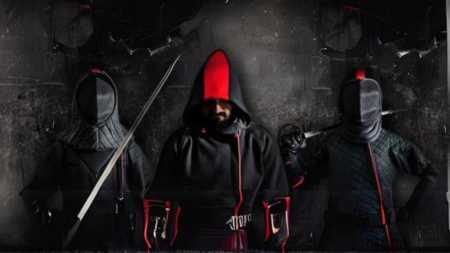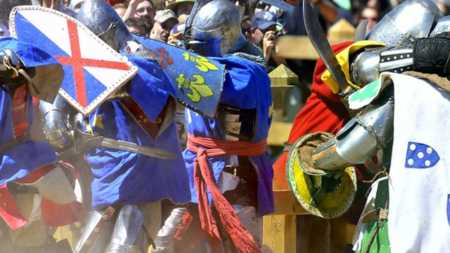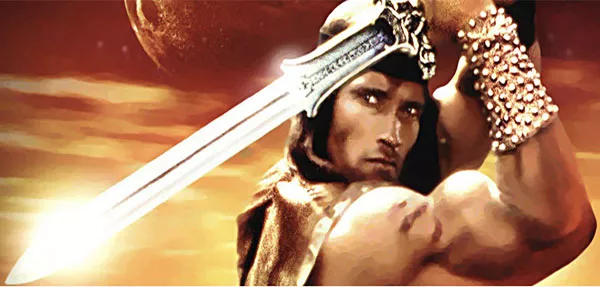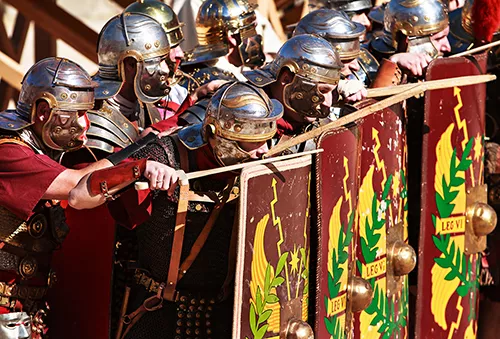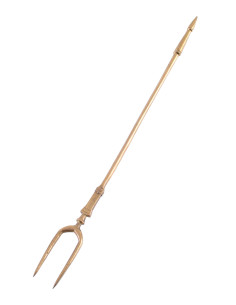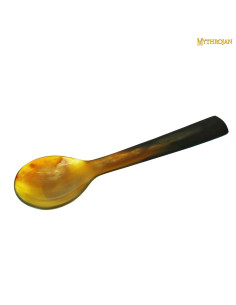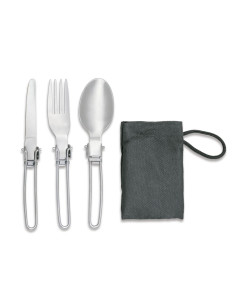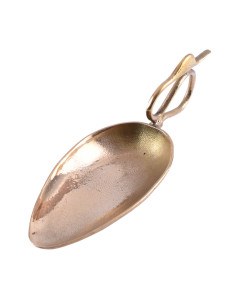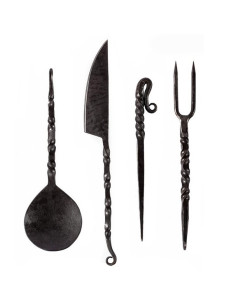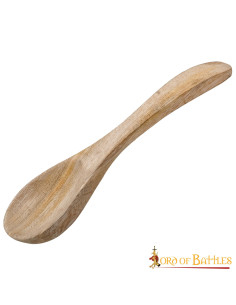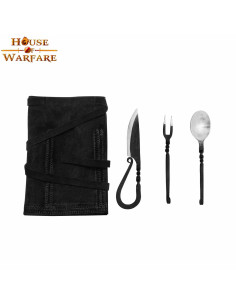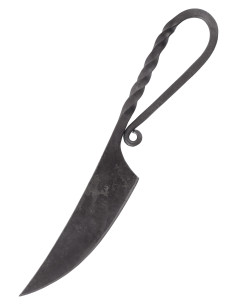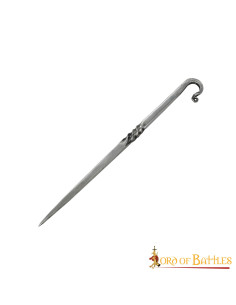Medieval Cutlery
13.00 €
Are you looking for a kitchen knife that combines style and functionality for your culinary preparations? This comprehensive kitchen knife is just what you need! With a 440 stainless steel blade and bone handles, this knife offers exceptional kitchen performance with a touch of elegance. Here are some features that make this knife stand out: 440 Stainless...
8.98 €
This reproduction two pronged Roman fork is made of brass and is a great addition to the Roman history reenactors kit. With a straight handle and simple yet elegant details ending in a tapered end, this fork is perfect for those who want to experience daily life in Roman times. The fork is a very interesting piece of flatware and a unique addition to any...
14.58 €
Discover authenticity and beauty in every meal with our 24.5 cm Buffalo Horn Spoon. If you're wondering why this spoon has become the choice of cooking connoisseurs and crafts lovers, here are its features and benefits: Handcrafted from Buffalo Horn: Each spoon is a masterpiece of craftsmanship, created from authentic buffalo horn. This natural material...
5.37 €
Get ready for a culinary adventure outdoors with the Stainless Steel Camping Cutlery Set from the Barbaric brand! This set of essential gear is designed for comfort and functionality on your expeditions. It consists of a fork, a spoon and a knife, all foldable for easy transport and storage. Whether you're camping, hiking or enjoying a picnic, these...
14.98 €
Cingus brass Roman spoon. This reproduction of a cignus with a large and deep almond-shaped bowl (oval with a slightly pointed tip) is made of brass. The short handle depicts an outward-facing swan's head on an S-shaped coiled neck. Do you like Roman history? Are you passionate about the era and love to recreate it? Then this Cingus Brass Roman Spoon is...
30.52 €
Are you passionate about medieval times? Would you love to hold an authentic hand-forged cutlery set in your hands? Well, you're in luck, because here you have the Battle Merchant Forged Medieval Cutlery Set. This cutlery set is all you need to transport you to the exciting medieval world. Each piece has been carefully forged by hand, guaranteeing the...
4.12 €
Functional wooden medieval spoon, 19 cm. HANDCRAFTED from ETHICALLY SOURCED HARDWOOD, this 19.1 cm long spoon is FULLY FUNCTIONAL and can also be used for historical re-enactments. It comes with a natural finish that adds to its raw medieval appeal. While eating a brimming bowl of tasty porridge or perhaps some fresh caviar, this medieval wooden spoon...
28.92 €
Are you passionate about medieval history? Do you like to recreate historical moments and feel part of the era? Then this hand-forged medieval cutlery set is perfect for you. With a case included, this cutlery set includes a two-pronged fork, knife and spoon, all handcrafted from high-quality materials to ensure durability and authenticity. Whether for a...
16.52 €
This spoon set measures approximately 6 inches long and is HANDMADE from REAL OX HORN and ETHICALLY SOURCED. Avoid any contact with dishwashers and hot liquids; Before use, be sure to wash under running water. Please note that this is a natural product that decomposes over time and therefore cracks may appear. Our medieval horn spoons! They are...
14.80 €
Are you looking for a versatile and reliable tool for a variety of tasks? Do you like the feel of a hand forged knife in your hand? Then this hand forged medieval knife is perfect for you. This knife is made from 1095 carbon steel, which is a strong and durable material. The blade is not stainless, but this gives it a sharper edge than stainless steel...
7.43 €
Take your camping experience a step further with this hand forged Viking Fork. If you are a camping enthusiast and like to eat straight out of the pot, this fork will be perfect for you! Our experienced craftsmen have painstakingly hand-forged this fork from strong iron, giving it an attractive twisted design that is sure to turn heads. At approximately...
6.60 €
If you are looking for a cutlery that never goes out of style, you cannot miss the opportunity to acquire our incredible hand-forged Viking fork-skewer. Are you ready to give your meals an epic touch? Don't think about it anymore and get it right now! Our Viking fork is made of strong steel, which guarantees long durability and impeccable performance....


